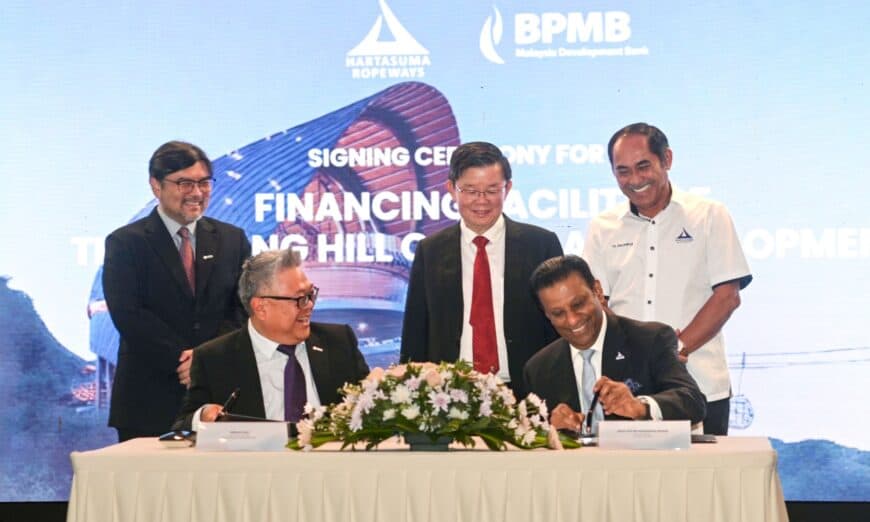THE Penang Hill Cable Car project is not intended to replace the more than century-old funicular railway, but to supplement it, as the latter reached the 1 million ridership mark for the year as of July 25.
Chief Minister Chow Kon Yeow made this remark at the signing of a financing agreement between Hartasuma Ropeways Sdn Bhd, a wholly owned special purpose vehicle (SPV) under Hartasuma Sdn Bhd (Hartasuma), and Bank Pembangunan Malaysia Berhad (BPMB) for the cable car project at G Hotel in Gurney Drive today.
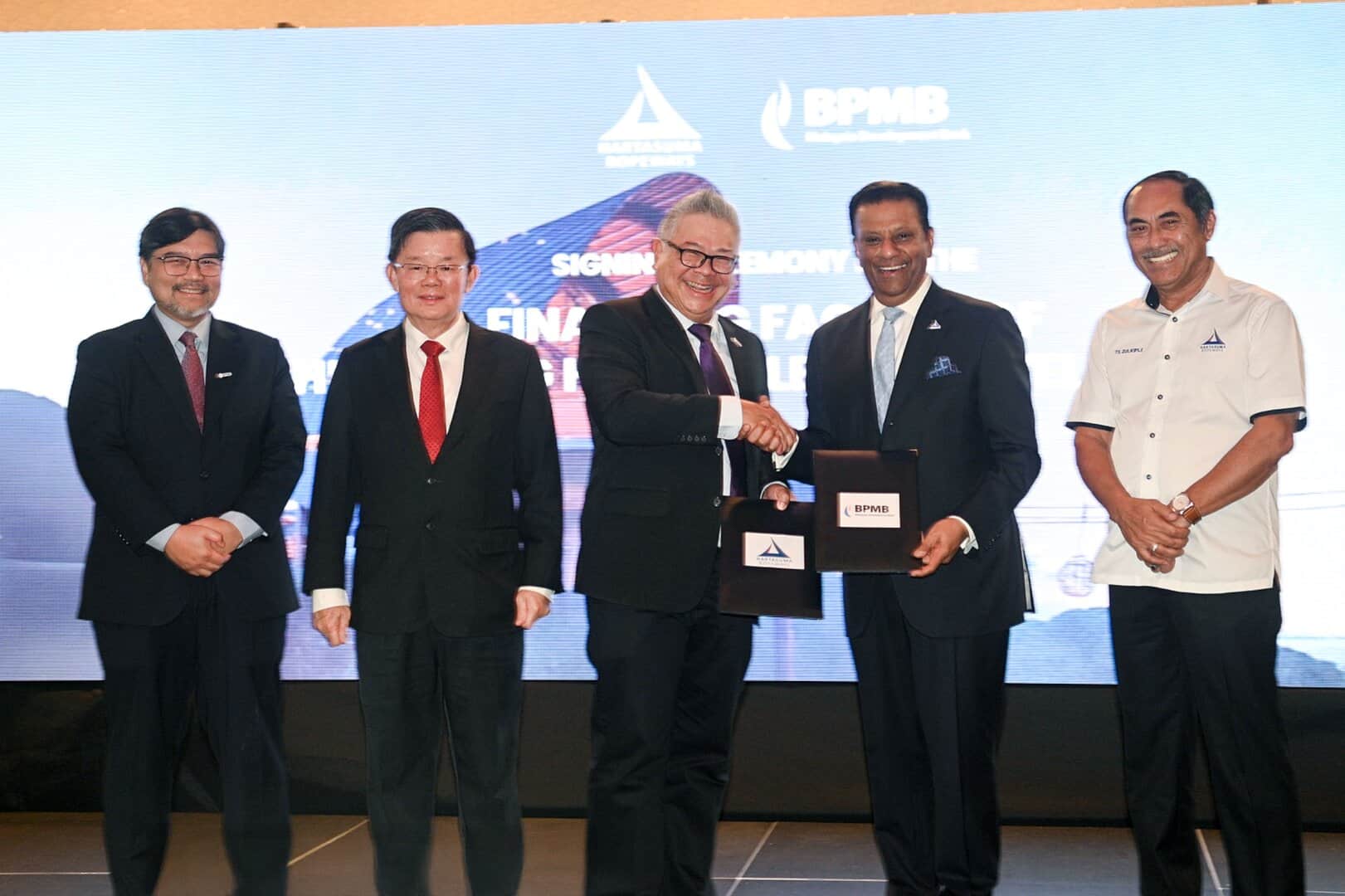
“It is a complementary solution, built to alleviate congestion, offer a new and exciting visitor experience, and ensure we are better prepared to manage peak periods sustainably.
“When completed, the cable car will also integrate seamlessly with the upgraded Astaka building, transforming the arrival experience for visitors and giving a fresh boost to the local economy through increased footfall, better amenities, and enhanced tourism offerings,” he said in his speech.
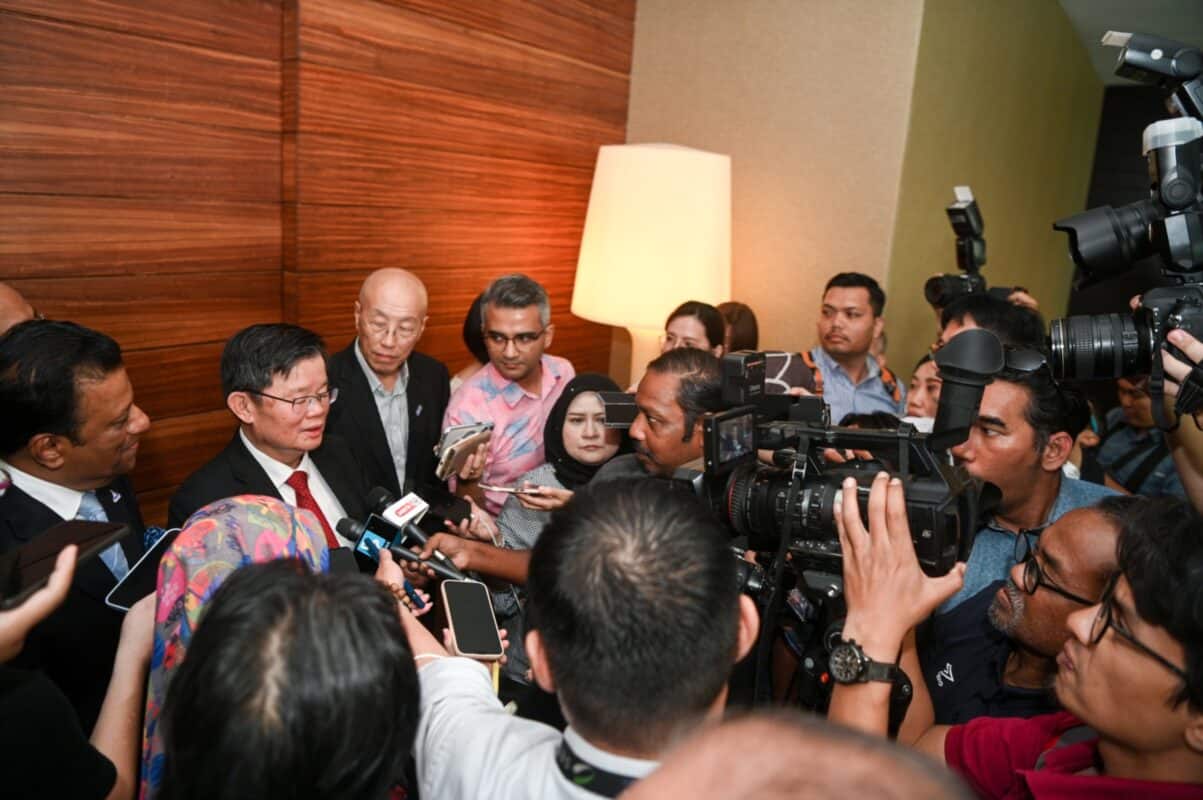
At a press conference after the ceremony, Chow said the state government has asked Hartasuma to conduct a feasibility study for a possible cable car project linking Penang Botanic Gardens and Gurney Bay.
“Penang Botanic Gardens and Gurney Bay are 2.5km apart and we’re merely looking into the feasibility of building cable cars to connect these two tourist attractions,” Chow said.
On the Penang Hill Cable Car project, Chow said it represents more than a new mode of transport; it reflects the state’s commitment to responsible development, improved public service, and future readiness.
“With today’s signing, we move from intention to action — from concept to construction. With the continued support of all stakeholders, I am confident that this project will not only elevate the Penang Hill experience but also help us climb together toward a more sustainable, inclusive, and visitor-ready Penang,” he added.
He described the milestone of crossing one million riders this year as a clear sign of growing demand for access to Penang Hill.
Chow also highlighted that meaningful transformation is already taking place on the hill, with the Astaka redevelopment entering its construction phase after demolition works were completed and the site officially handed over to the contractor on July 21.
“Both these developments — the surge in ridership and the ongoing Astaka project — highlight a simple truth: Penang Hill is evolving, and our infrastructure must evolve with it.
“They also make clear that the need for the cable car is no longer theoretical. It is urgent. Today’s financing agreement is the bridge that allows us to move from planning to implementation,” he said.
As chairman of the Penang Hill Corporation (PHC), Chow described the signing as a decisive step forward for a project that reflects the state’s vision of sustainable tourism, balanced development, and long-term planning.
He expressed his gratitude to BPMB and Hartasuma for supporting the project, noting Hartasuma’s experience in sustainable transport and commitment to environmental standards.
He also acknowledged PHC for its stewardship of Penang Hill, carefully balancing development and conservation.
“This project has undergone rigorous planning, environmental impact studies, and stakeholder engagement. It fully aligns with the Penang2030 vision of building a family-focused, green, and smart state that leaves no one behind,” Chow said.
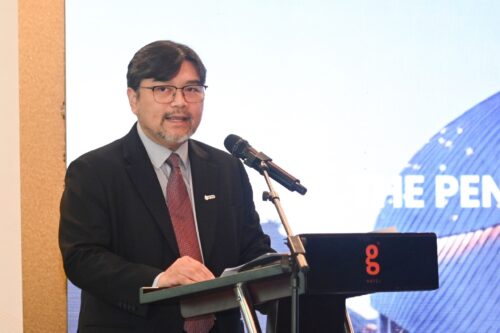
BPMB managing director Mohamed Nazri Omar said the RM367 million financing facility reflects the bank’s pivotal role in bringing the project to life.
He added that the project will create new socio‑economic opportunities, with up to 300 jobs generated during construction and over 100 more during operations.
“As a development financial institution, BPMB is committed to delivering impact capital that drives national development and empowers local economies.
“By enabling the Penang Hill Cable Car Project, we are helping to strengthen Penang’s position as a world-class tourism destination and create meaningful opportunities for the community,” Mohamed Nazri said.
He noted that visitor numbers are steadily rebounding, with 1.8 million recorded in 2024, up from 1.6 million the year before, and approaching pre‑pandemic levels of 1.9 million. With the cable car in place, annual visitation is expected to nearly double, reaching up to 3.96 million by 2035.
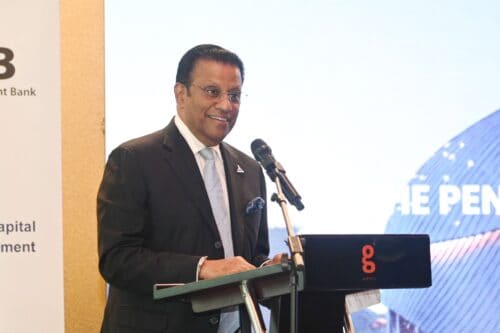
Hartasuma executive director Tan Sri Ravindran Menon said securing the financial facility was a defining moment not just for Hartasuma, but for Penang Hill and the many stakeholders who believe in its potential.
He added that it also reflects the confidence placed in the project’s vision, its long‑term value, and the capability of Hartasuma Ropeways to deliver with discipline and purpose.
“With this milestone now achieved, our focus shifts fully toward execution — to deliver a transformative, globally admired experience by early 2027. This is a legacy project, and we are proud to carry it forward with the commitment and care it deserves,” Ravindran said.
“We are building more than a cable car. We are building a shared memory – one that will be passed down in stories, revisited in photographs, and treasured in the hearts of those who journey here.”
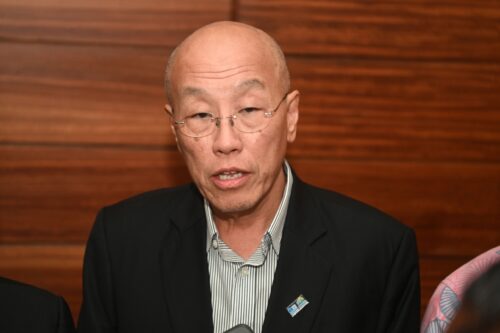
PHC general manager Datuk Cheok Lay Leng said the cable car would serve as an alternative mode of transport to the existing funicular railway, helping to manage the sharp rise in visitors to Penang Hill.
“The carrying maximum capacity is 1,000 passengers per hour,” he said. The journey from the Penang Botanic Gardens to the summit will take about 10 minutes.
Also present at the signing ceremony were state Infrastructure, Transport and Digital Committee chairman Zairil Khir Johari, Housing and Environment Committee chairman Datuk Seri Sundarajoo Somu, Air Itam assemblyman Joseph Ng, Hartasuma chairman General (R) Tan Sri Zulkiple Kassim, and BPMP group head (Coverage Group Coverage) Gerald Goh.
Story by K.H. Ong
Pix by Siew Chia En
Video by Ahmad Adil Muhamad

